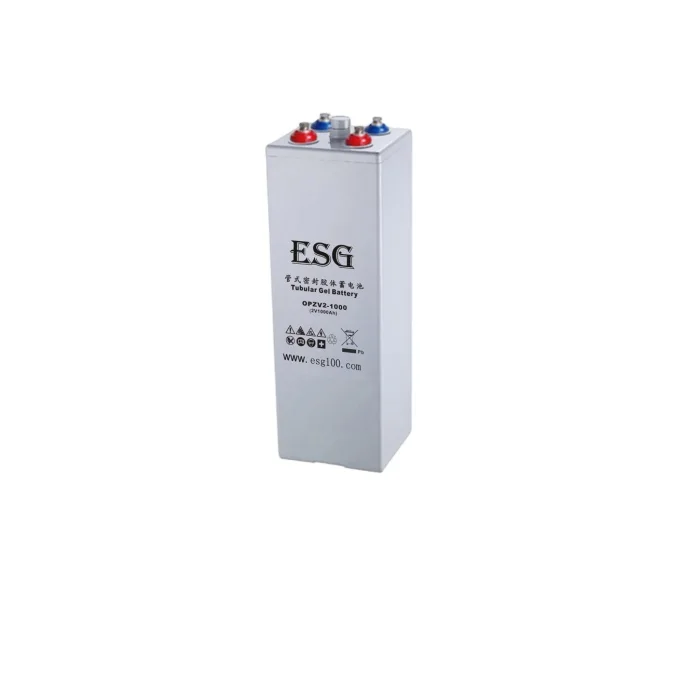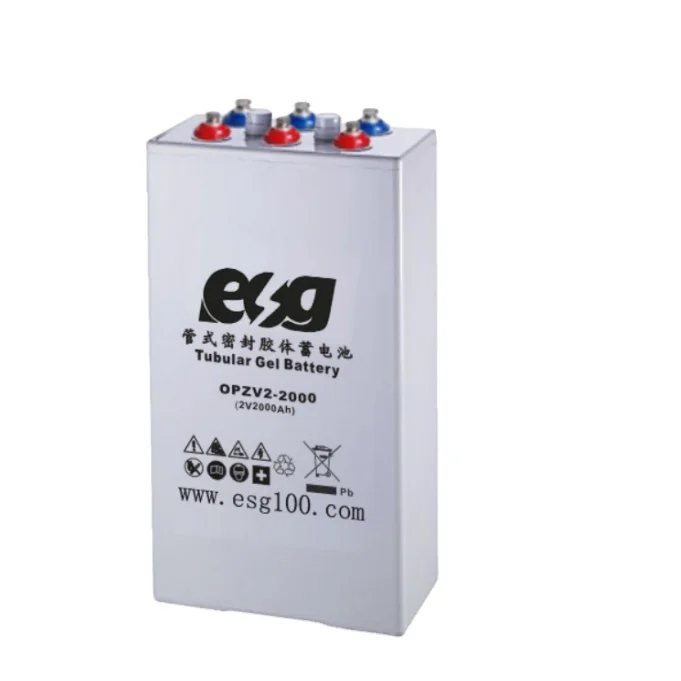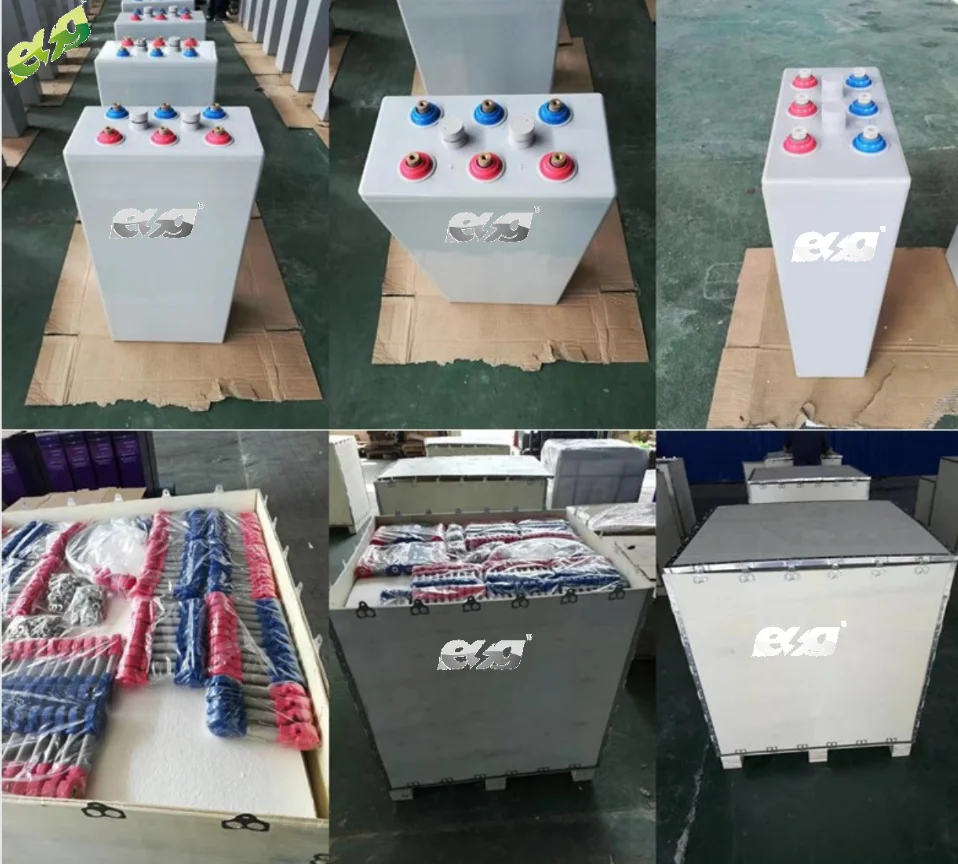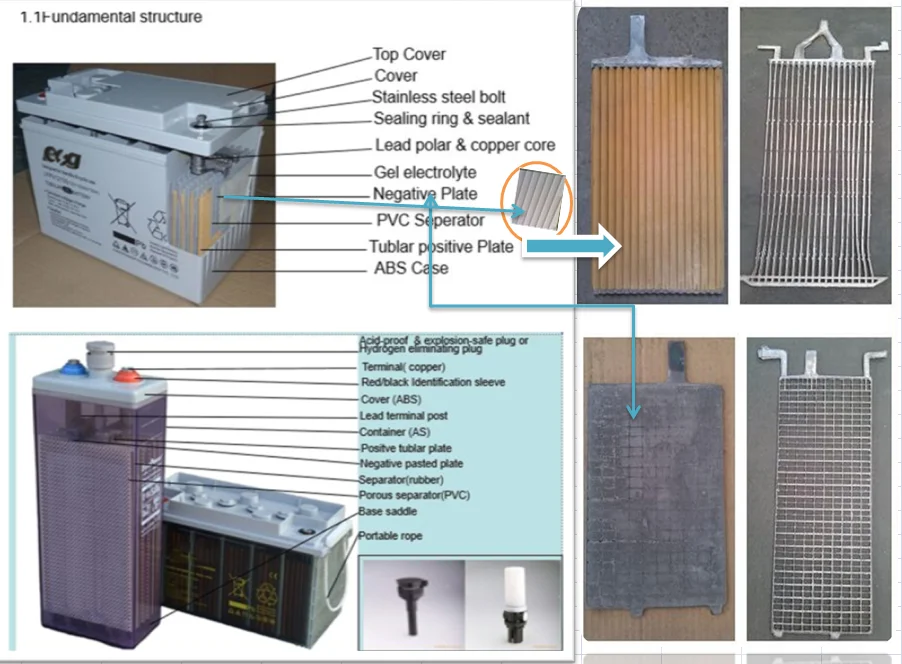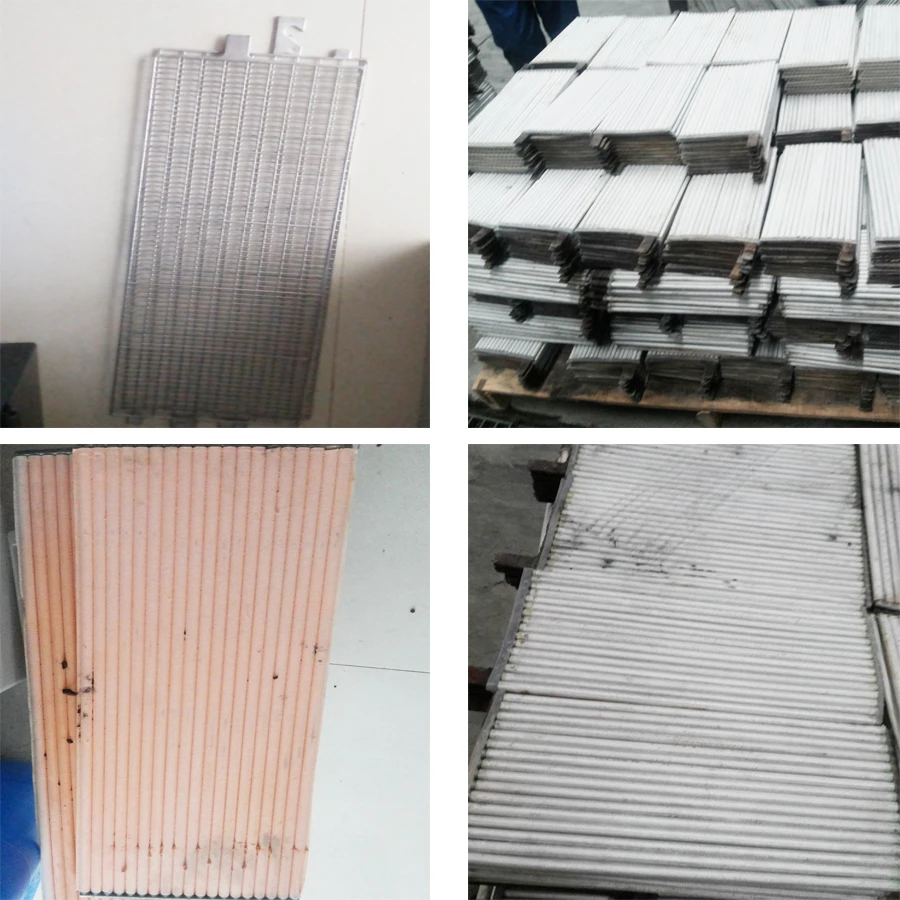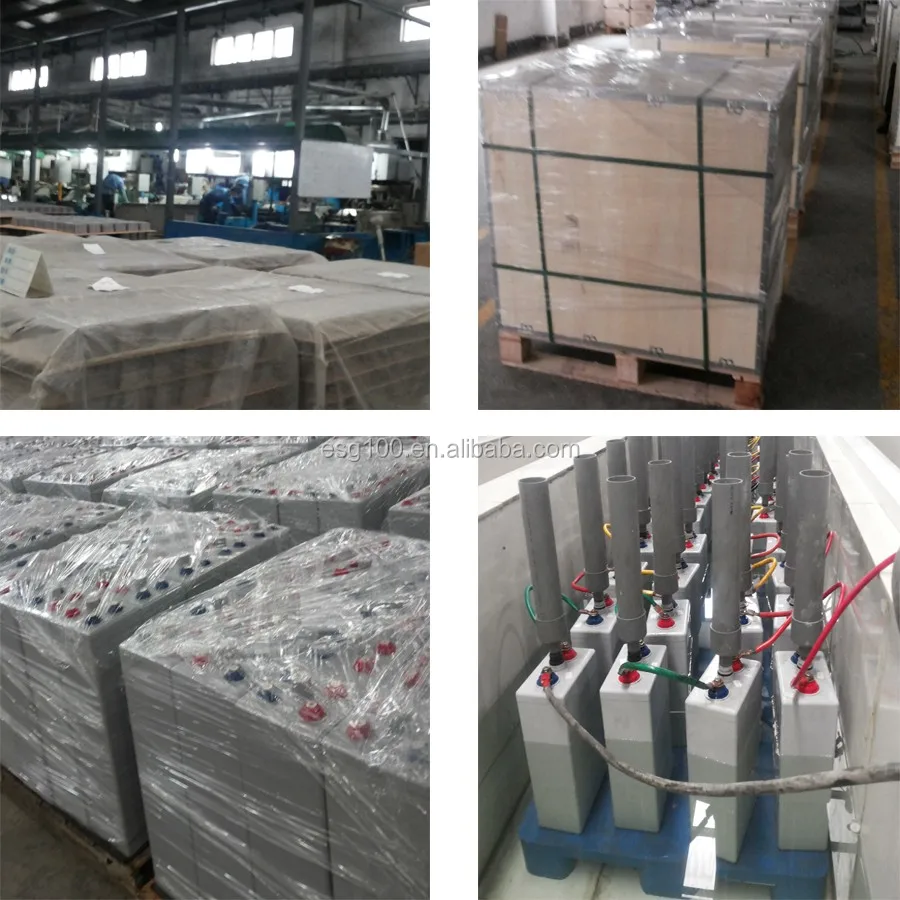ESG for aircraft OPZV 2v1000ah GEL AGM UPS deep cycle maintenance free storage battery
ESG for aircraft OPZV 2v1000ah GEL AGM UPS deep cycle maintenance free storage battery

ESG for aircraft OPZV 2v1000ah GEL AGM UPS deep cycle maintenance free storage battery

1.Packaging & Delivery
Packaging Detail: One battery/ carton, 12pcs battery per pallets
Delivery Detail: 15-20 days
2.pecifications
OPZS battery 1) with extreme long life more than 20 years
2) with competitive price
3) Tubular battery plate
OPzS battery series
Voltage covers: 2V
Capacity: 100Ah-3000Ah.
Designed floating service life: 20 years @ 20 °C/68 °F
3.Description:
The OPZS series stationary battery are newly products which were developed at the end of 2005. The performance meet the standard DIN40736 and IEC60896-21.
ESG for aircraft OPZV 2v1000ah GEL AGM UPS deep cycle maintenance free storage battery

4. Characteristics
--- Positive plate:
It is a tubular plate which can prevent the active material from falling off. The grid of positive plate is Pb-Sb Multi-Alloy
--- Separator:
With the combined application of porous rubber and porous PVC, the separator has high porosity and good corrosion-resistance
--- Acid-Proof bolt: It is of a special shape of funnel having the function of filtering acid smog and retarding flame. It can measure the density and temperature of electrolyte.
---The design life of the battery is more than 20 years.
--- Ensuring sufficient electrolyte for battery discharge
CONSTRUCTION
Positive plate Tubular plate with die cast Pb-Ca alloy grid
Negative plate – Balanced Pb-Ca grid for improved recombination efficiency
Separator – Leaf shape rubber separator
Electrolyte – Dilute high purity sulphuric acid of 1.240 specific gravity
Battery container – SAN
Battery cover – ABS
Pillar seal – 100% factory tested, proven two layers epoxy resin seal
Relief valve – Complete with integrated flame arrestor
| OPZS | OPzS100 | 100 | 8.1 | T9(M8) | 103*206*355(410) |
| OPZS | OPzS150 | 150 | 10.8 | T9(M8) | 103*206*355(410) |
| OPZS | OPzS200 | 200 | 12.9 | T9(M8) | 103*206*355(410) |
| OPZS | OPzS250 | 250 | 15.4 | T9(M8) | 124*206*355(410) |
| OPZS | OPzS300 | 300 | 18.5 | T9(M8) | 145*206*355(410) |
| OPZS | OPzS350 | 350 | 21 | T9(M8) | 124*206*471(526) |
| OPZS | OPzS420 | 420 | 24.5 | T9(M8) | 145*206*471(526) |
| OPZS | OPzS490 | 490 | 28.2 | T9(M8) | 166*206*471(526) |
| OPZS | OPzS600 | 600 | 33.4 | T9(M8) | 145*206*646(701) |
| OPZS | OPzS800 | 800 | 46.9 | T9(M8) | 191*210*646(701) |
| OPZS | OPzS1000 | 1000 | 57.4 | T9(M8) | 233*210*646(701) |
| OPZS | OPzS1200 | 1200 | 67.7 | T9(M8) | 275*210*646(701) |
| OPZS | OPzS1500 | 1500 | 83.8 | T9(M8) | 275*210*796(851) |
| OPZS | OPzS2000 | 2000 | 110 | T9(M8) | 399*214*772(827) |
| OPZS | OPzS2500 | 2500 | 139.4 | T9(M8) | 487*212*772(827) |
| OPZS | OPzS3000 | 3000 | 164.8 | T9(M8) | 576*212*772(827) |
5.Telecom
Electric Utilities
Control Equipments
Security Systems
Medical Equipments
UPS systems
Railroad Utilities
Photovoltaic Systems
Renewable Energy Systems
6.Our work shop
ESG for aircraft OPZV 2v1000ah GEL AGM UPS deep cycle maintenance free storage battery

ESG for aircraft OPZV 2v1000ah GEL AGM UPS deep cycle maintenance free storage battery


ESG for aircraft OPZV 2v1000ah GEL AGM UPS deep cycle maintenance free storage battery

7.Our promise
ESG for aircraft OPZV 2v1000ah GEL AGM UPS deep cycle maintenance free storage battery

8.Main fair
ESG for aircraft OPZV 2v1000ah GEL AGM UPS deep cycle maintenance free storage battery

ESG for aircraft OPZV 2v1000ah GEL AGM UPS deep cycle maintenance free storage battery

ESG for aircraft OPZV 2v1000ah GEL AGM UPS deep cycle maintenance free storage battery

ESG for aircraft OPZV 2v1000ah GEL AGM UPS deep cycle maintenance free storage battery

ESG for aircraft OPZV 2v1000ah GEL AGM UPS deep cycle maintenance free storage battery

ESG for aircraft OPZV 2v1000ah GEL AGM UPS deep cycle maintenance free storage battery

ESG for aircraft OPZV 2v1000ah GEL AGM UPS deep cycle maintenance free storage battery

Battery Terms, Definitions, and Glossary for reference
· Acid
· A type of chemical that can release hydrogen ions when mixed with water. Sulfuric acid is used in a lead-acid battery.
· Active Material
· The porous structure of lead compounds that produces and stores electrical energy within a lead-acid battery. The active material in the positive plates is lead dioxide and that in the negative is metallic sponge lead. When an electrical circuit is created, these materials react with sulfuric acid during charging and discharging according to the following chemical reaction: PbO2 + Pb + 2H2SO4 = 2PbSO4 + 2H2O.
· AGM (Absorbent Glass Mat)
· A type of non-woven separator material composed almost entirely of glass microfibers that absorbs and retains the electrolyte, leaving no free electrolyte in the cell to spill. VRLA batteries made with this material are often referred to as "AGM" batteries.
· Ampere (Amp, A)
· The unit of measure of the electron flow rate, or current, through a circuit.
· Ampere-Hour (Amp-Hrs, Ah)
· A unit of measure for a battery’s electrical storage capacity, obtained by multiplying the current in amperes by the time in hours of discharge. (Example: A battery that delivers 5 amperes for 20 hours delivers 5 amperes x 20 hours = 100 amp-hrs of capacity.)
· Battery Charger
· Device supplying electrical energy to a battery.
· Boost Charge
· The process of ensuring that the cells and plates within a battery are charged sufficiently for the battery to perform its desired function. Boost charging is typically done for a short duration at high current.
· BCI Group
· The Battery Council International (BCI) Group Number "fingerprints" a battery with the following characteristics: (a) dimensions (L x W x H), (b) voltage (6V or 12V), (c) polarity (right-hand front positive, left-hand front positive, etc.), (d) type terminals (top, side, "L", etc.). The BCI Group Number does not designate a battery’s capacity; it merely defines the above-listed physical characteristics.
· Capacity
· The capacity of a battery is specified as the number of amp-hrs that the battery will deliver at a specific discharge rate and temperature. The capacity of a battery is not a constant value and is seen to decrease with increasing discharge rate. The capacity of a battery is affected by a number of factors such as active material weight, density of the active material, adhesion of the active material to the grid, number, design and dimensions of plates, plate spacing, design of separators, specific gravity and quantity of available electrolyte, grid alloys, final limiting voltage, discharge rate, temperature, internal and external resistance, age and life history of the battery.
· Cell
· The basic electrochemical current-producing unit in a battery, consisting of a set of positive plates, negative plates, electrolyte, separators and casing. In a lead-acid battery, the cell has an open-circuit voltage of approximately 2 volts. There are six cells in a 12-volt lead-acid battery.
· Charge Acceptance
· The quantity of current in ampere-hours which a battery in a defined charge state can accept at a specified temperature and charge voltage within a defined period.
· Circuit
· An electrical circuit is the path followed by a flow of electrons. A closed circuit is a complete path. An open circuit has a broken, or disconnected, path.
· Circuit (Parallel)
· A circuit that provides more than one path for the flow of current. A parallel arrangement of batteries (usually of like voltages and capacities) has all positive terminals connected to a conductor and all negative terminals connected to another conductor. If two 12-volt batteries of 50 ampere-hour capacity each are connected in parallel, the circuit voltage is 12 volts, and the ampere-hour capacity of the combination is 100 ampere-hours.
· Circuit (Series)
· A circuit that has only one path for the flow of current. Batteries arranged in series are connected with negative of the first to positive of the second, negative of the second to positive of the third, etc. If two 12-volt batteries of 50 ampere-hours capacity each are connected in series, the circuit voltage is equal to the sum of the two battery voltages, or 24 volts, and the ampere-hour capacity of the combination is 50 ampere-hours.
· CCA
· Cold Cranking Amps is a rating used in the battery industry to define a battery’s ability to start an engine in cold temperatures. A great amount of amperes is needed to start the engine, but only for a short time.The actual rating is the number of amps that can be removed from a new fully charged battery at 0°F for 30 seconds while maintaining a voltage of at least 7.2 volts (for a 12-volt battery).As a battery ages with use, it may no longer be able to meet its original CCA rating.The higher the CCA rating, the greater the starting power of the battery.
· Conductance
· The ability to transmit current in a circuit or battery.
· Deep-Cycle Battery
· Battery that provides a steady amount of current over a long period of time, provides a surge when needed and is designed to be deeply discharged over and over again.
· Electrolyte
· In a lead-acid battery, the electrolyte is sulfuric acid diluted with water. It is a conductor that supplies water and sulfate for the electrochemical reaction: PbO2 + Pb + 2H2SO4 = 2PbSO4 + 2H2O.
· Electronic Tester
· An electronic device that assesses the condition of a battery through an ohmic measurement such as resistance or conductance, typically without drawing large current loads.
· Element
· A set of positive and negative plates assembled with separators.
· Equalization Charge
· The process of ensuring that the cells and plates within a battery are all at full charge and that the electrolyte is uniform and free of stratification. This is normally done by charging the battery under controlled conditions (charge current, time and upper voltage limits are usually specified).
· Formation
· In battery manufacturing, formation is the process of charging the battery for the first time. Electrochemically, formation changes the lead oxide paste on the positive grids into lead dioxide and the lead oxide paste on the negative grids into metallic sponge lead.
· Gel
· Electrolyte that has been immobilized by the addition of a chemical agent, normally fine silica, to prevent spillage. Batteries made with gelled electrolyte are often referred to as gel batteries. Gel batteries are one typical type of VRLA battery.
· Intercell Connectors
· Lead structures that connect adjoining cells in series, positive of one cell to the negative of the next, within a battery.
· Lead-Acid Battery
· Battery made up of plates, lead and lead oxide (various other elements are used to change density, hardness, porosity, etc.) with a 35 percent sulfuric acid and 65 percent water solution. This solution is called electrolyte, which causes a chemical reaction that produces electrons.
· Load Tester
· An instrument that draws current (discharges) from a battery using an electrical load while measuring voltage. It determines the battery’s ability to perform under actual discharge conditions.
· Low Water-Loss Battery
· A battery that does not require periodic water addition under normal driving conditions; also referred to as a maintenance-free battery.
· Maintenance-Free
· A battery that normally requires no service watering during its lifetime of use.
· Primary Battery
· A battery that can store and deliver electrical energy but cannot be recharged. A lead-acid battery is NOT a primary battery.
· Reserve Capacity Rating
· The time in minutes that a new, fully charged battery will deliver 25 amperes at 27°C (80°F) and maintain a terminal voltage equal to, or higher than, 1.75 volts per cell. This rating represents the time the battery will continue to operate essential accessories if the alternator or generator of a vehicle fails.
· Sealed Battery
· See VRLA.
· Secondary Battery
· A battery that can store and deliver electrical energy and can be recharged by passing direct current through it in a direction opposite to that of discharge. A lead-acid battery is a secondary battery.
· Separator
· A porous divider between the positive and negative plates in a cell that allows the flow of ionic current to pass through it, but not electrical current. Separators are made from numerous materials such as polyethylene, polyvinyl chloride, rubber, glass fiber and cellulose.
· Short Circuit
· An unintended current-bypass in an electric device or wiring. Outside the battery, a short circuit is established when a conductive path is established between the two terminals of a battery. Inside a battery, a cell short circuit is the result of contact between the positive and negative plates and will cause a cell to discharge and render the battery useless.
· Splash Barrel
· A splash barrel is part of the battery's vent system. Its purpose is to keep acid out of the vents when the battery is upright as acid is splashed around in the cell from motion and vibration.
· Starting, Lighting, Ignition (SLI) Battery
· Rechargeable battery that supplies electric energy to an automobile to power the starter motor, the lights and the ignition system of a vehicle’s engine.
· State of Charge (or State of Health)
· The amount of deliverable low-rate electrical energy stored in a battery at a given time expressed as a percentage of the energy when fully charged and measured under the same discharge conditions. If the battery is fully charged, the state of charge is said to be 100 percent.
· Terminals
· The electrical structures on the battery to which the external circuit is connected. Typically, batteries have either top terminals (posts) or side terminals. Some batteries have both types of terminals (dual terminal).
· Vents
· Mechanisms that allow gases to escape from the battery while retaining the electrolyte within the case. Flame-arresting vents typically contain porous disks that reduce the probability of an internal explosion as a result of an external spark. Vents come in both permanently fixed and removable designs.
· VRLA
· Valve-regulated lead-acid battery. AGM and gel are the two types of VRLA batteries. These batteries have no “free” liquid electrolyte and in the cell operate on the oxygen recombination cycle, which is designed to minimize water loss. VRLA batteries feature vents that are one-way burp valves. These low-pressure burp valves prohibit air ingress to the cell while permitting gases to vent from the cell if necessary. The pressure maintained in the battery, though only very slight (<3-psi) is required to facilitate the oxygen generated at the positive plates back into water.
· Watt
· The unit for measuring electrical power, i.e., the rate of doing work, in moving electrons by, or against, an electrical potential. Formula: watts = amperes x volts.
· Watt-Hour (Watt-Hrs, WH)
· The unit of measure for electrical energy expressed as watts x hours.
We have more categories for you. lf you can't find the products you want above,just fill in the form and tell us whatproducts you want to import from China.


